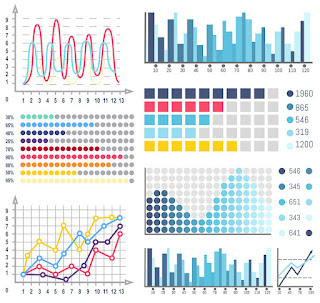Data Dive: Middle Class Stability
When you're alone and life is making you lonely you can always go...Petula Clark would tell you downtown but I'm going to suggest the Pew Research Center, where you can find almost any kind of data you ever wanted to find about anything social. It's amazing.
Although the title of this graphic is depressing, I don't think the data story here is at all. The fact of the matter is that if we turn that frown upside down, we see that 53% of those with a bachelor's degree or more education moved up from the lower- to the middle-income tier. (Now, could likely be because of new-grad hiring but, don't rain on my parade). We also see that a significant 38% of people with some college moved up into the middle class from the lower tier. AND all categories with some education over a HS diploma were higher in moving upward on the income scale. See kids, homework does pay off.
So, what with gas prices and Biden's lethargic stance on student loan forgiveness, I've been thinking a lot about the economy recently. Having just returned from a $100 Target haul that included a mere 5 items, each with an average price of $20 (trash bags, a shower curtain liner, and some toothpaste so...nothing exciting except that they're much more expensive now!!!!), I'm wondering how many of us "educated people" are going to become financially unstable before we know it.
Pew, of course, to the rescue.
This is a matter, really, of middle-class stability. Encompassing over 50% of the population and the main portion of the consumer class, the middle-class in America plays a vital role in propping up the stability of the country. We pay our taxes, we buy Arks full of food at Costco weekly, we buy stupid shit from Amazon consistently, and we purchase cars and homes at blinding speeds, usually financing both within an inch of our lives. We keep many, many industries afloat and many, many Jeff Bezoses rich if you believe string theory is real.
(Frankly, if we ever banded together "Proletariat Revolution"-style, we would absolutely win and Marx's soul could finally rest in its atheistic void of nothingness).
The Middle-Class: Hanging on to that Rung for Dear Life
So, I had a look-see at middle-class stability and guess what: even before inflation, its demographics are definitely shifting. While the middle-class isn't going anywhere, those who sit in it are changing. Guess what else: blacks and Hispanics (referred to as such because of the way data is collected) are leaking down the income ladder faster than other groups and at a blindingly alarming rate. In 2021, over 50% of the black people surveyed and 49% of the Hispanic people surveyed moved down from the higher income tier into the middle class. Want more concerning news? Sure.
If we look at the same groups slipping from the middle-class to the lower-income tier, they're still the highest of the groups with 21% each moving down out of the middle class, making them at much more risk for economic instability and vulnerable to all manner of related instabilities, including providing for their basic needs like housing, food, and healthcare.
The sum of these two charts also tells us that 72% of blacks surveyed and 70% of Hispanics surveyed moved down the income ladder in 2021.
Just sit with that a minute. I'll wait.
Bright Side? Education Matters
Before we dive completely off the deep end of systemic, racialized, intergenerational poverty, all of which contribute to the situation outlined above, there was one ray of sunlight I found. That is: education matters.
And, yes, those without a HS diploma deeply suffered on the income scale in just one year. That's a terrifying level of vulnerability and, knowing what we know, a vast majority of that number will be single moms of color.
Collective Impact Practitioners Unite
So, why is this a bright side when we know school systems are racist? Because, everyone at all levels and roles within education and all of its adjunct systems (local government, employers, nonprofits, funders, teachers unions, federal government, financial institutions) including students, can dig in, knowing the critical importance of getting to and through college. Education for the workforce matters. It creates future stability and resilience even in the face of $10 Starbucks drinks that we. have. to. have.
All joking aside, the systems-change implications here are very clear. We all owe it to our students to get them confidently out into the world. What does that system look like? One that delivers excellent education, support, and resources to meet students where they are at and takes them where they want to go. While we're working on that, let's throw in "debt-free." (retroactively, as well...I'm looking at you Joe Biden...hi Bernie).
And that's your data dive for today.




Comments
Post a Comment